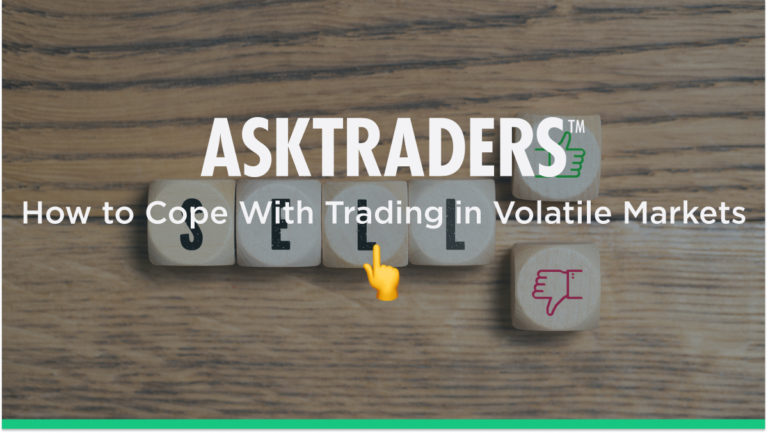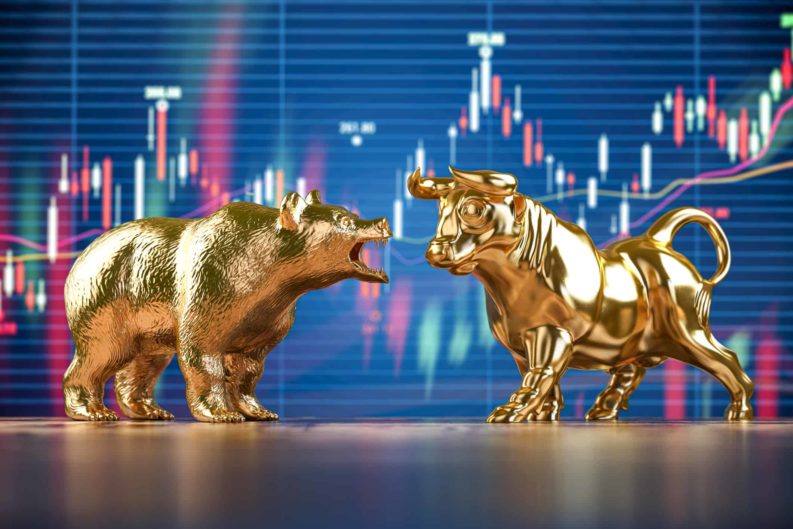
Some volatility, however, is the cornerstone of trading, as without frequent changes in market direction and price movement, traders would be unable to profit from the intraday and daily swings that occur across the major financial market asset classes. So, traders want to see volatility. However, sometimes, too much volatility can lead to bigger-than-anticipated losses. Key for the trader is to appreciate when markets are becoming more volatile and to be able to react accordingly.
In this article, we are going to look at what volatility is and why it is important for trading the financial markets. We will also highlight common mistakes that traders make when trading in more erratic and aggressively moving markets. Furthermore, we will look at various tactics and strategies that can be employed when faced with a more volatile trading environment in order to avoid a more negative trading experience.
- Why Volatility Is Important in Markets and Trading
- Mistakes That Traders Make When Trading Volatile Markets
- Tactics to Cope With Trading in Volatile Markets
- Volatile Markets Trading Takeaways
Why Volatility Is Important in Markets and Trading
Volatility is a measure of the rate of change in the price of a security, commodity or currency. It is important because it is a measure of risk. The higher the volatility, the greater the risk. Volatility also provides opportunities for traders. When prices are volatile, there are more opportunities to profit, but also clearly to make losses. Volatility creates risk for traders. If prices move quickly and aggressively against a trader’s position, then they can quickly lose money. So clearly, volatility is an important factor to consider when trading any security, commodity or currency.
From a mathematical perspective, volatility is a statistical measure of the dispersion of returns for a given security or market index. Volatility can be measured by using the standard deviation or variance between returns from the same security or market index. Volatility measures how large the price swings are for a given security or asset class. When markets are volatile, prices can swing dramatically in either direction. Volatility can be measured by a number of different mathematical formulas, but the most common is the standard deviation formula. By measuring volatility, traders can better assess the risks and opportunities involved in trading an asset.
Volatility can be high in the short term because of a few key factors. For example, if there’s an unexpected statement from a politician or central banker, or when macroeconomic data is released, volatility quickly increases as markets interpret what this means for the economic outlook and for the prices of various assets.
However, markets can often move into phases of longer, increased volatility. This is often driven by bigger changes in an economy, particularly the global economy. An example of this would be the more intense volatility that has been seen throughout 2022. Driven by the spike in commodity prices and inflation, this occurs as we move into a post-COVID world that is wrought with supply chain issues. Compounded by the conflict in Ukraine, again putting upward pressures on prices, notably food and energy. In turn, global inflationary pressures have seen price increases in many of the major global economies spike to multi-decade highs. In reaction to the surging inflation, the world’s major global central banks have moved to rapidly increase interest rates. The overall impact of these factors has been a sustained increase in volatility across nearly all global asset classes in 2022.
With high volatility comes the risk of larger losses, but also opportunities for traders who can take advantage of this increase in volatility – but only when managed correctly.
Mistakes That Traders Make When Trading Volatile Markets

One of the cornerstones of trading is risk management, and one of the pillars of risk management is protecting your capital base by not risking more than is affordable. Under periods of high volatility, traders often fall into the trap of becoming overly emotional and often then abandon their core trading strategy. This then leads to poor trading decisions, potential losses and, when markets are particularly volatile, chasing those losses. In addition, when markets are more volatile, it is often seen as an opportunity to make back those losses, which often leads to even greater drawdowns on the trading account as traders risk more than they would normally be comfortable risking. The first mistake that traders often make in volatile markets, then, is to take too much risk.
The second error made by traders when trading volatile markets is that they allow their emotions to overtake them, when markets become increasingly volatile. High volatility is effectively markets moving more aggressively and quicker than in ‘normal’ trading circumstances. This heightened volatility then causes traders to have less time to make trading decisions, and it also means that the consequences of those trading decisions are potentially bigger as markets are moving faster and further than in less volatile conditions. In this scenario, traders can often make irrational decisions as they become more easily overwhelmed, more quickly. This can then lead to an abandonment of the strategy or rules that the trader normally adheres to when the market is less volatile.
The last mistake that we see traders making in volatile trading environments is to over trade! Perhaps caused by trading more frequently than usual, or by taking larger-than-usual trading exposure. As with the irrational decision-making that we have highlighted above, when markets are more volatile, many traders become excited by the potential to reap larger-than-normal profits from the more aggressive price action. This can then lead to more risk taking, rather than a scaling back of risk taking. The increased volatility should allow traders to make larger profits anyway, from the bigger price movements. In a more volatile trading situation, traders should not need to trade more often or trade in a bigger size. In fact, as we discuss below, the opposite is true, and fewer trades and smaller trade size is the better tactic.
Tactics to Cope With Trading in Volatile Markets
We are now going to look at three tactics that can help traders avoid the above-mentioned mistakes when trading in volatile markets.
The first and probably most important strategy for dealing with more volatile trading conditions is to reduce the position size. When participating in more aggressive changes in price, it is often necessary to potentially allow for the market to move further against you when you are in a trade, due to the increased volatility. The next logical step, therefore, is to reduce the trading size, thereby allowing for the overall potential loss from any trade to be reduced, given that the stop loss is going to be placed further from your entry price (we will discuss this below). Scaling back of risk exposure due to the height and volatility is a common practice among professional traders and investors. However, it is a practice that the retail or semi-professional trader often neglects.
The second strategy to deal with more volatile markets is to place a wider stop loss. A stop loss is a key tool for any trader, but it is particularly important that an exit stop is placed to protect your account when trading in more aggressively volatile markets. Given the more aggressive price action, a wider stop loss is often required in order to allow any open trade room to ‘breathe’. However, the wider stop loss should not be to the detriment of your overall risk management strategy and approach.
This brings us to the third and final tactic to cope with trading in volatile markets: the placement of a wider, more rewarding, and in turn more profitable take-profit target. As we have highlighted above, given that the stop loss placement is likely to be more generous, due to the heightened volatility, it makes sense to have a more profitable target at which to exit a successful trade. This means that the trader’s risk-reward ratio can be maintained by having a more optimistic target and a more generous stop loss.
Volatile Markets Trading Takeaways
So, in this article we have defined what volatile markets are, and looked at why they are important for short-term and intraday traders. Traders like volatility, but sometimes too much can be an issue. We have also reviewed what to avoid when trading in volatile markets, looking at the common mistakes that traders often fall into, including increasing trading activity, risking too much capital, and becoming overly emotional. Furthermore, we have gone on to look at various ways to cope with these potential mistakes, by adjusting the trading strategy and risk management approach. This might mean adjusting potential targets, the placement of stop losses, and scaling back on the trading exposure. You should now be better placed to cope with the next occurrence of heightened volatility in the financial market you regularly trade.
Now that you have a better understanding of what to look for, what to avoid, and how to cope with trading in volatile markets, why not take a look at the AskTraders trusted broker list to find the best broker for you!
